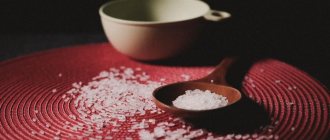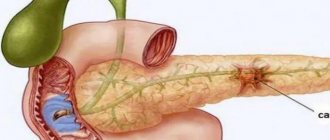For many people, mushrooms are an incredibly appetizing dish that we sometimes eat in large quantities.
Everything would be fine, but few people know that mushrooms can not only cause poisoning, but also lead to death. Of course, when everything is good, you don’t even need to think about it, but what if the “scenario” has changed? What if you ate a poisonous mushroom along with edible mushrooms? What are the symptoms of mushroom poisoning? What to do if you are poisoned by mushrooms? Who should I contact? Let's look at everything in order.
Fungi are living organisms that, by their origin, are at the junction between plants and animals.
Experts note that mushrooms are a difficult-to-digest product for the intestines, therefore, they are not recommended for use by children, the elderly, as well as pregnant and lactating women, especially in large quantities.
Symptoms of mushroom poisoning
The first signs of mushroom poisoning appear after 1.5-2 hours, but sometimes a day or two after eating them.
Symptoms include:
- Severe abdominal pain;
- Nausea and vomiting;
- Diarrhea (diarrhea);
- Increased body temperature – up to 38°C;
- Cold extremities - arms and legs;
- Dizziness;
- Headache;
- Weak pulse;
- General weakness;
- Inflammatory process in the gastrointestinal tract.
In case of severe poisoning, as well as poisoning with poisonous mushrooms (pale toadstool, red fly agaric, false foam, satanic mushroom), the following symptoms are possible:
- The appearance of delusions, hallucinations;
- Mental disorder;
- Severe diarrhea;
- Increased sweating and drooling;
- Anuria;
- Slight constriction of the pupils;
- Increased drowsiness;
- Jaundice (Gospel disease);
- Heart failure;
- Breathing disorders;
- Pulmonary edema;
- Coma.
If timely and qualified assistance is not provided, a person may fall into a coma, and then death may occur.
Some mushrooms can be considered conditionally edible, that is, the toxic substances in them are destroyed with appropriate processing. Eating conditionally edible mushrooms (volnushki, bitter mushrooms, pig mushrooms) without special treatment can cause symptoms of acute gastroenteritis. Oddly enough, despite a fairly large number of truly poisonous mushrooms, only six or seven species are found in the middle zone.
Of course, poisonous and inedible mushrooms are those whose poisonous properties do not disappear when processed by any means, i.e., when eaten, they always cause poisoning. Poisonous mushrooms include: toadstool, red fly agaric, green fly agaric, panther fly agaric, false honey fungus, satanic mushroom. For poisoning, it is enough to eat half a mushroom.
In most cases, poisoning occurs due to ignorance or insufficient experience in picking mushrooms. Poisonous mushrooms can not only be collected by mistake in the forest, but also bought at a spontaneous market, where the products sold have not passed the necessary checks.
In general, the causes of probable poisoning can be identified as follows:
- the toxicity of the mushroom itself, which is eaten;
- long-term storage of fresh, unprocessed mushrooms, or improper storage of ready-made dishes;
- damage to the fungus by parasites and insects, for example, fungus flies;
- consumption of certain types of mushrooms together with alcoholic beverages;
- picking mushrooms near roads, industrial enterprises, landfills, which leads to the accumulation of compounds and substances harmful to the body in the product;
- abuse of mushrooms, which are conditionally edible representatives.
How does mushroom poisoning manifest?
When consuming toadstool, symptoms develop in three stages:
- Stage I develops within 6-24 hours after ingestion of poison. The main signs are a sharp increase in temperature, attacks of nausea, vomiting, cramps in the stomach and intestines, frequent loose stools;
- Stage II is a latent period that lasts about two to four days. Symptoms subside at this time, giving the impression of beginning recovery;
- Stage III – irreversible consequences develop: liver and kidney tissues are affected, blood clotting is impaired, jaundice appears, and urination is impaired. Subsequently, convulsive syndrome and coma occur. Deterioration occurs quickly and acutely.
When eating a red fly agaric or talking mushroom, the first signs appear within 35 minutes (in rare cases, up to 2 hours). Initially, mild nausea occurs, progressing to vomiting. The victim complains of cramping abdominal pain, difficulty breathing, and diarrhea. Increased sweating, salivation, lacrimation, constriction of the pupils, bronchospasm phenomena, slowing of cardiac activity, decreased blood pressure, and collapse are also observed. If help is not provided, then a disturbance of consciousness subsequently occurs (hallucinations, falling into a coma), and convulsions develop.
When eating panther fly agaric, thirst, dehydration of the body are observed, the pupils dilate, and cardiac activity increases.
Mushroom poisoning is a very common occurrence; they make up about 4% of the total number of poisonings. Children are most susceptible to this disease, since their body does not yet have the ability to quickly eliminate toxins.
What is the first aid for mushroom poisoning?
For any poisoning, even mild poisoning, you must call an ambulance!
Before being examined by a doctor, you must:
- rinse the stomach by drinking five to six glasses of clean water or a weak solution of potassium permanganate and inducing vomiting. Repeat the procedure up to six times.
- if in the first hours of poisoning there is no loose stool, you need to give a laxative: bitter salt (magnesium sulfate) or castor oil;
- It’s good to give cleansing enemas several times. In case of late disorders (more than 8-24 hours after eating mushrooms), laxatives should not be given.
- cover the patient, apply warm heating pads to the legs and stomach;
- in case of nausea and vomiting, give salted water to drink in small sips (1 teaspoon of salt per glass of water). For severe weakness, strong sweet tea and black coffee are recommended. You can give milk and honey. Under no circumstances should you drink alcoholic beverages, since alcohol promotes rapid absorption of mushroom poisons into the body.
The remains of the fungi that caused the poisoning should be given to a doctor for examination - this will facilitate subsequent treatment.
The material was prepared by Evgeny Volkov, head. 1st substation of State Institution "LRTSEMPiMK" LPR
Botulism
Improperly prepared or stored mushrooms, such as canned mushrooms, can cause botulism.
Botulism is a serious and serious disease that develops as a result of an infection entering the body, located mainly in the ground, next to the spores of the mycelium. If the mushroom is poorly washed, peeled, or not sufficiently boiled, an infection can enter the body.
The first signs of botulism appear 12-72 hours after eating mushrooms.
The main symptoms of botulism are:
- Nausea and vomiting;
- Visual impairment (everything floats, doubles);
- Convulsions;
- Diarrhea;
- Headache;
- Labored breathing;
- Dry mouth.
Important! At the first signs of botulism, i.e. After eating canned mushrooms, consult a doctor immediately!
Types and characteristics of poisonous mushrooms
There are a large number of mushrooms, some of them are conditionally poisonous and cause poisoning only under a certain number of circumstances, while others are absolutely poisonous and can even lead to death. Each poisonous mushroom has its own characteristics, in addition, they all contain different toxic substances, and, therefore, cause different symptoms.
The most famous poisonous mushrooms
As we know, cap mushrooms can be divided into lamellar and tubular. This difference can be seen if you look at the bottom of the mushroom cap. It should be noted that the most dangerous poisonous mushrooms are lamellar mushrooms.
Since there are a lot of poisonous mushrooms, we will consider only a few of them:
- Poisonous entoloma has several varieties, one of which is spring entomola. The toxic substances that make up this mushroom tend to bind to blood proteins, causing strong signs of poisoning, but are not fatal.
- Patouillard fiber - it is quite difficult to distinguish this mushroom from edible ones, however, if you break the cap, a strong smell of alcohol will appear - this feature is key, and helps to distinguish this mushroom from other species. The spores contain muscarine and other toxic substances, so it is strictly forbidden to inhale it. In addition, this mushroom is extremely poisonous when eaten even in small quantities and can be fatal.
- Amanita - there are such species as: spring, stinking, toadstool, panther, gray and red. The spring fly agaric contains muscarinic poisons, which cause death with minimal exposure to the human body.
- The stinking fly agaric has an unpleasant odor, and the composition of toxic substances is similar to the pale toadstool.
- The toadstool has the greatest resemblance to the pale grebe, not only in the composition of toxic substances, but also in appearance.
- The panther fly agaric has a similar coloration to the red fly agaric, but its appearance is not as bright. In addition, panther fly agaric is much more poisonous than red fly agaric, since it contains not only muscarinic toxic substances, but also scopalamine and hyocyamine. This mix of poisons leaves no chance of survival for a person who has consumed panther fly agaric. It should be noted that in the place where this mushroom grows there are absolutely no midges and insects, since they die when they inhale its smell.
- The gray fly agaric is a type of mushroom that also contains muscarinic toxins.
- The red fly agaric has a bright color, which by its appearance warns of danger. The fungus contains poisons that tend to penetrate the skin and also affect the parasympathetic nervous system. The pulp of the mushroom contains a high concentration of cholines, muscarinic poisons, putrescine, iboteic acid, bufotenine and betaine.
- The gall mushroom is quite often mistaken for edible porcini mushrooms, but the main differences are the pronounced bitter taste and the color of the mushroom cap on the underside. Due to the strong bitter taste, gall fungus poisoning is quite rare, however, if it occurs, it can take a long time to appear.
- Pale toadstool looks like russula or champignons, depending on the growth period. Even heat treatment of the mushroom does not reduce its toxic properties, and the first symptoms of poisoning may not appear for more than a day. Less than half of an adult mushroom eaten is fatal.
- Brick-red false mushrooms have a pronounced property of camouflaging themselves as normal types of mushrooms, and therefore often fall into the “catch” of a mushroom picker. A distinctive feature of false mushrooms is considered to be the missing dense ring on the stem of the mushroom, which is necessarily observed in edible autumn mushrooms. Poisoning with false honey mushrooms affects the central nervous system and cardiovascular system, and without proper assistance it can lead to coma and death.
After reading the information about some types of mushrooms, it becomes clear that the time the first signs appear depends on the amount of mushrooms consumed, as well as on their type. So, signs of poisoning can appear within a few minutes, hours, in the first day, or make themselves felt after a couple of weeks.
Often you feel sick immediately a few minutes after eating
First aid for mushroom poisoning
What to do if you are poisoned by mushrooms? The main thing is to remain calm!
Experts recommend following the following help instructions:
- At the first symptoms, call a doctor immediately! If it is not possible to call a doctor, then try to take the patient to the nearest medical facility as soon as possible.
- Maintain bed rest.
- Drink plenty of liquid , this will help quickly remove toxins (poisonous substances) from the body and flush the stomach. This point is especially relevant for vomiting and diarrhea, since with these clinical manifestations the body also loses the fluid necessary for its normal functioning (dehydration). Cold water, chilled strong tea, mineral water, and a light pink solution of potassium permanganate (potassium permanganate) are good to drink.
- Take enterosorbents - drugs that bind toxic substances and promote their rapid elimination from the body: “Activated carbon”, “White coal”, “Smecta”, “Enterosgel”.
- If the patient is not vomiting and has no desire to go to the toilet, a laxative is given and an enema is given to remove toxins from the body. This will speed up the introduction of poisons from the intestines.
- Symptomatic treatment:
- In case of breathing problems: Atropine is administered subcutaneously.
- At elevated temperatures: Ibuprofen, Paracetamol.
- For dehydration: “Regidron”, “Litrozol”, “Oralit”.
- In case of severe poisoning with poisonous mushrooms, blood transfusions and hemodialysis may be used, and glucose and insulin may be administered intravenously.
Important! For an accurate diagnosis, potentially poisonous mushrooms that have poisoned the patient cannot be thrown away - they must be given to a doctor for examination.
- A gentle diet is prescribed , which is aimed at quickly restoring the functionality of the digestive system. The diet includes avoiding fatty, spicy, smoked and other heavy foods, alcoholic beverages, and smoking. The menu should include steamed or boiled, chopped vegetables, fruits, and light soups.
If proper assistance is provided, recovery occurs within 1-2 days. In case of severe poisoning, treatment of poisoning and restoration of health can take up to a month.
Diagnostics
Since mushroom poisoning requires immediate assistance, the diagnosis is made at the prehospital stage, based on anamnesis. Further full examination is carried out in a hospital setting. This is done by a toxicologist or anesthesiologist-resuscitator.
The following methods are used for diagnosis:
- Physical - attention is paid to the main signs of poisoning, heart rate is determined, pressure is measured, mental arousal is assessed, and the adequacy of the assessment of what is happening.
- Laboratory - the presence of poisons in the blood or urine is revealed by a toxic-chemical study.
- Hardware - used to provide emergency resuscitation. They involve the use of an anesthesiological monitor to monitor the patient’s vital signs - saturation, blood pressure, heart rate, body temperature.
Allergy to mushrooms: treatment
- for allergies, you can conduct a course of specific immunotherapy in cases where it was possible to identify a “fungal allergen” - of course, as prescribed by a doctor;
- in addition, antihistamines and glucocorticoids are prescribed;
- sorbents (Enterosgel) are used that remove the allergen from the body;
- to provide emergency care for anaphylaxis or angioedema, adrenaline, prednisolone, and suprastin are administered;
- in case of a toxic reaction, the stomach is washed, Enterosgel is given, and dehydration is combated by intravenous administration of saline solutions.
Allergy to mushrooms
An allergic reaction to mushrooms occurs in the form of a food or contact allergy - it can be caused by single-celled fungi contained in fermented milk products or living on the skin of humans and domestic animals, as well as forest inhabitants eaten as food.
Allergies to fungal spores also occur. The fact is that with the flow of air, fungal spores fall on the skin, settle on objects around us, and penetrate the bronchi and lungs.
Quite often, people in certain professions suffer from allergies to mushrooms: for example, allergies to mold fungi occur in brewers, pharmacists, agricultural workers and librarians. Mushroom allergens can cause atopic dermatitis, bronchial asthma, urticaria, food allergies and allergic rhinitis.
Representatives of the so-called alternative medicine often recommend various mushroom tinctures, which can cause allergies in many. For example, an allergy to kombucha, birch mushroom (chaga) or milk mushroom.











